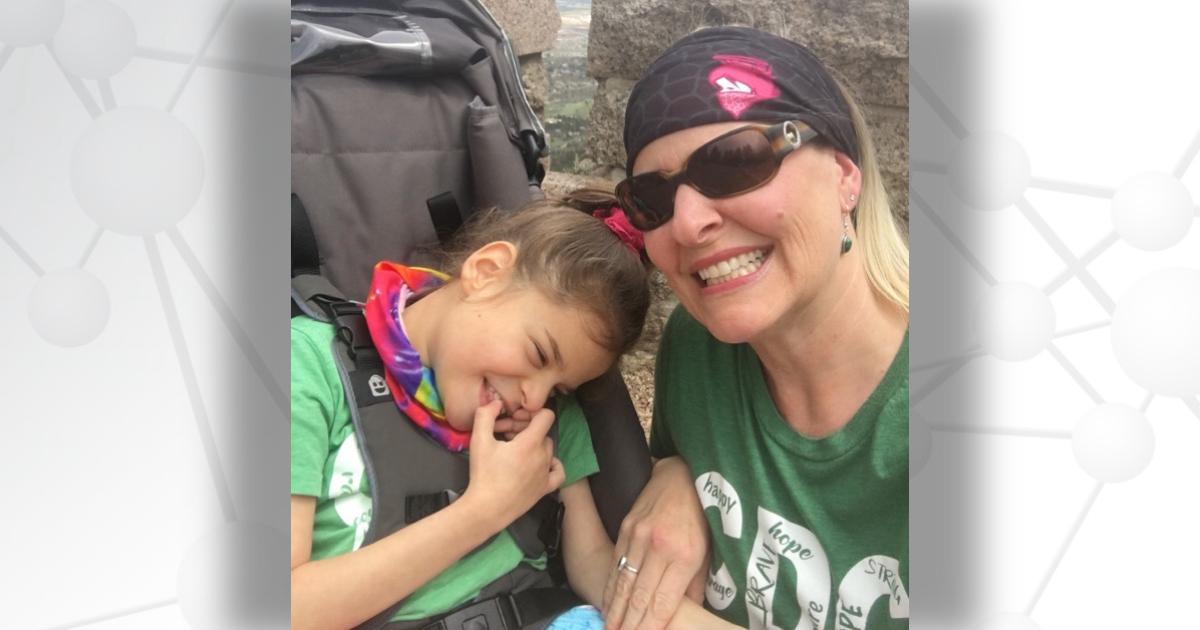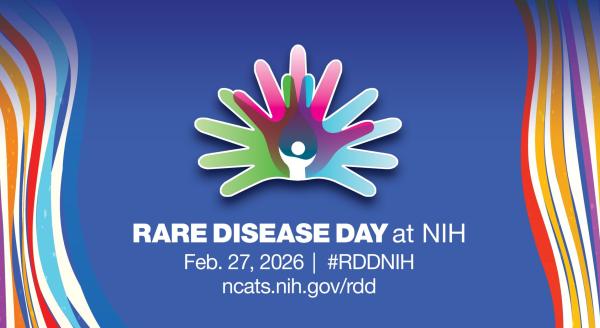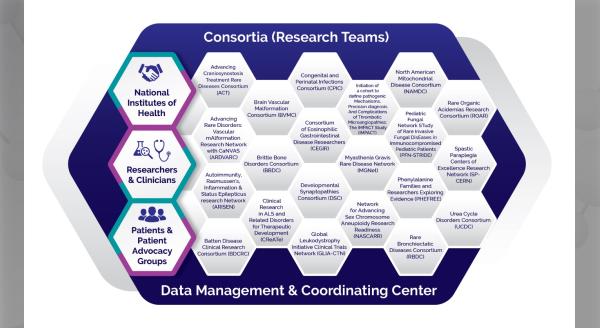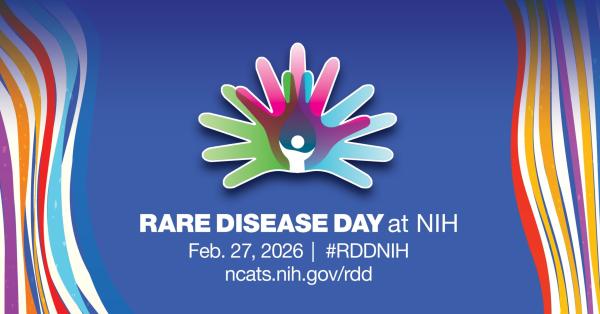Andrea Miller, JD, MHA, is the founder and president of CDG CARE (Community Alliance and Resource Exchange), a patient advocacy group that supports individuals and families affected by congenital disorders of glycosylation (CDG). CDG is a large group of rare, inherited disorders that affect a complex process in the body called glycosylation. Here, she shares her journey to rare disease advocacy, impactful work by CDG CARE, and collaboration with the Frontiers in Congenital Disorders of Glycosylation Consortium (FCDGC).
How did you get involved in advocacy work for rare diseases?
I was a nonprofit lawyer and health administrator for 15 years before having my daughter, Bianca, in 2010. Bianca was born prematurely and experienced many associated delays. In hindsight, I think this masked what could have been early signs of a genetic disorder. By nine months old, Bianca was experiencing significant developmental and motor delays.
With initial concerns over a brain tumor ruled out, we went in to see an ophthalmology surgeon who suggested she may have a genetic disorder. At the time, I didn’t know anything about genetics or rare diseases. It was after two months of testing, when she was 15 months old, that Bianca was diagnosed with PMM2-CDG.
My path into advocacy was having that initial diagnosis and not knowing where to turn for help. On the night Bianca was diagnosed, I reached out desperately through an email listserv that I found through an internet search and within 60 minutes received a reply from a CDG medical professional in Germany who responded reassuringly, told me not to panic, and sent me some resources of professionals I could contact in the USA.
It was such a relief to receive his reply, as everything I had found on the internet was very scary and made it seem like there wasn’t much hope for her future. As soon as I had the opportunity, I took a copy of his email to Bianca’s current genetics doctor in the Midwest. However, despite this information, her local geneticist continued to tell us that her average lifespan was 12 months old and that we should just go home and cherish every day we had with her. It was a heartbreaking time along our rare disease journey to diagnosis.
From that point forward, I made it my personal mission to connect with specialists across the USA and the globe. I quickly realized that I needed to find other families like ours and try to prevent them from experiencing this same situation of isolation and despair.
Within weeks to months, I was able to connect with Dr. Donna Krasnewich, the leading expert in CDG at the National Institutes of Health (NIH), and Dr. Hudson Freeze, the leading US research expert at Sanford Burnham Prebys in California.
In 2012, I attended a CDG conference in Chicago and met Dr. Vanessa Ferreira (now president and founder of the Portuguese Association for CDG (APCDG) and fellow RDCRN Coalition of Patient Advocacy Groups [CPAG] lead group member representing CDG & Allies - PPAIN). We began connecting regularly to identify ways we could work together to find and support families.
In 2014, I founded CDG CARE, which is a volunteer-based, 501(c)(3) nonprofit organization in the USA. We continue to collaborate closely with fellow CDG patient organizations which have been established around the globe.
Can you tell us more about CDG CARE?
CDG CARE is a nonprofit organization founded by parents seeking information and support for CDG. CDG CARE’s mission is to increase awareness and promote genetic testing for CDG, to provide support to families affected by CDG, and to advocate for and fund scientific research to advance the diagnosis and treatment of CDG.
In 2014, we began with a website to provide newly diagnosed families with the sort of resources and opportunities to connect that I wished I had received when Bianca was first diagnosed. We developed a triage line with a network of CDG medical specialists that families could email to support their own local doctors.
In 2016, we held our first educational conference, which was a huge success with around 100 attendees. By that time social media had taken off and we created a Facebook page to begin connecting families. With more and more CDG types being identified, more families were being diagnosed, and the community was growing rapidly.
It was at this point that we officially joined forces with the few other patient groups that were established at the time, and we became a global community. This was also the year that we joined forces with the APCDG to coordinate the first annual World CDG Awareness Day, which was declared on May 16, 2016. Now in its seventh year, has grown into an annual global awareness and fundraising campaign with participation from thousands of families, professionals, and communities worldwide.
With just a handful of patient leaders in different corners of the world, we realized that we are stronger together and we needed to be one voice. Even though there are different types and classifications of CDGs, we all experience many of the same signs and symptoms, and we continue to reinforce to all patients and families that we must stand united within the greater context of the rare disease community.
How is CDG CARE engaged in the FCDGC?
CDG CARE was honored to be involved in the development of the application for the NIH’s U54 grant application in 2018. Through the months of communication during the application process, our patient association group connections with the key specialists in our rare disease space developed into a more structured collaboration. All the efforts surrounding the FCDGC—from the application and ultimately to the award process—advanced the CDG patient community needs, voices, and priorities to the next level.
The development of the FCDGC and joining the RDCRN has enabled CDG CARE to network with larger, more established rare disease groups and learn from the wider rare disease community. As a consortium, we are very active in advancing research and focusing on reducing health disparities among CDG families with different cultural backgrounds and languages. With the awareness our rare community has gained, we have been able to obtain grants that are allowing us to translate and develop patient information, education, brochures, and videos that are culturally specific and offered in communities of high need that have been identified throughout the USA by our medical professionals.
The nationwide—and now international—clinical and research sites of the FCDGC and partnerships for CDG CARE through this process have proved invaluable to advancing collaboration, funding, and research in the field of CDG. As the lead patient advocacy group in the USA, CDG CARE has been afforded the opportunity to expand our mission, educational offerings, patient resources, and grant programs to families, research institutions, and laboratories around the globe.
How do you support research?
CDG CARE’s core mission is to promote the needs and priorities of patients, which includes promoting awareness of CDG, educating the global community, and identifying and supporting research opportunities. Over the past several years, the rare disease space has seen the role of patient advocacy groups evolve, and collaborative partnerships develop between such groups and the scientists who study rare diseases.
CDG CARE has created a focused organizational approach and recognized the importance of building a distinguished, expert panel of medical and research professionals who serve on the organization’s Medical Advisory Board (MAB). The members of the MAB share their experiences and expertise on behalf of patients affected by CDG, contribute to the validation of website content and quarterly newsletter publications, and attend/present at the biennial USA CDG Family Conference.
Like many rare disease advocacy organizations, CDG CARE initially focused its initiatives on directly assisting and educating patients and families, but by 2018, efforts began to expand our core mission and resources into advancing and funding scientific research to advance the diagnosis and treatment of CDG. The CDG CARE Board of Directors and Medical Advisory Board created a diverse and interdisciplinary Research Committee that served as the new grant program foundation for preparing research application materials; establishing submission criteria and timelines; ensuring a fair review and ranking system comprised of patient community representatives, researchers, and clinicians; and announcing awards on an annual basis.
Creating this focused organizational approach takes human and financial resources. Through the support of CDG CARE’s fundraising campaigns, relationships strengthened with industry partners, and the dedicated volunteer efforts of the organization’s Research Committee, we have been able to successfully fund over $250,000 in research projects—from basic science to clinical research that will ultimately identify and test promising therapies for individuals affected by CDG.
In 2019, the CDG research and education landscape experienced a significant boost with the award to launch the FCDGC. Following the formation of the FCDGC, research efforts were aligned with the CDG CARE Review Committee, and now the program has been able to expand and draw the attention of a more diverse pool of applicants and researchers to award multiple grants by maximizing grant dollars available through both the FCDGC and CDG CARE.
What are your goals for the future?
The CDG community would really benefit from having the next generation of scientists and researchers interested in advancing the cause for CDG. We have pockets of researchers who are interested in researching organism models for developing tests for CDG, or gene therapy, and we could definitely benefit from additional internships and educational opportunities in these areas.
Speaking to professionals over the years, they have said that there was just one question on their medical exam about genetic disorders, or about CDG, and that is something we want to change. We want to advance our awareness and interest among the professional community, match that interest with engagement of patient community advocates, collaboratively identify gaps in care and treatments, and strategize together to develop opportunities to improve patient outcomes.
The Frontiers in Congenital Disorders of Glycosylation Consortium (FCDGC) is part of the Rare Diseases Clinical Research Network (RDCRN), which is funded by the National Institutes of Health (NIH) and led by the National Center for Advancing Translational Sciences (NCATS) through its Division of Rare Diseases Research Innovation (DRDRI). FCDGC is funded under grant number U54NS115198 as a collaboration between NCATS, the National Institute of Neurological Disorders and Stroke (NINDS), the Eunice Kennedy Shriver National Institute of Child Health and Human Development (NICHD), and the Office of Dietary Supplements (ODS).






